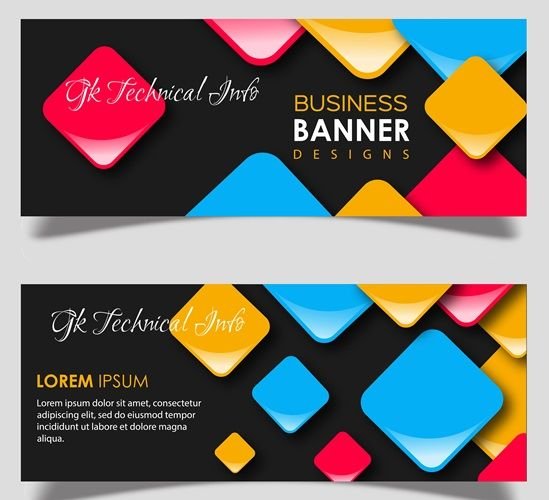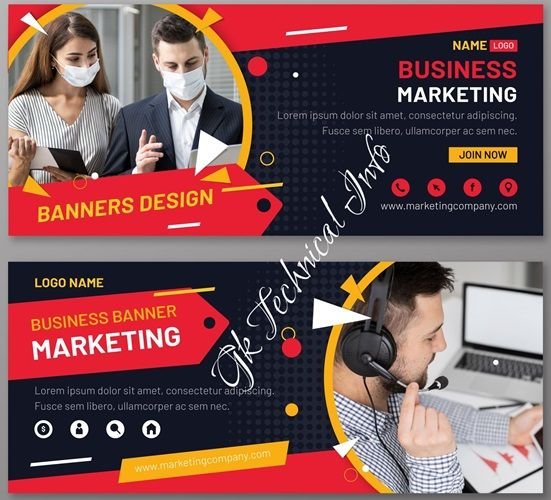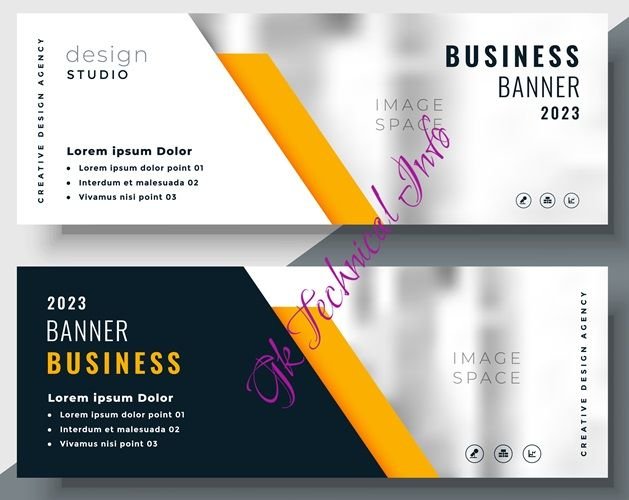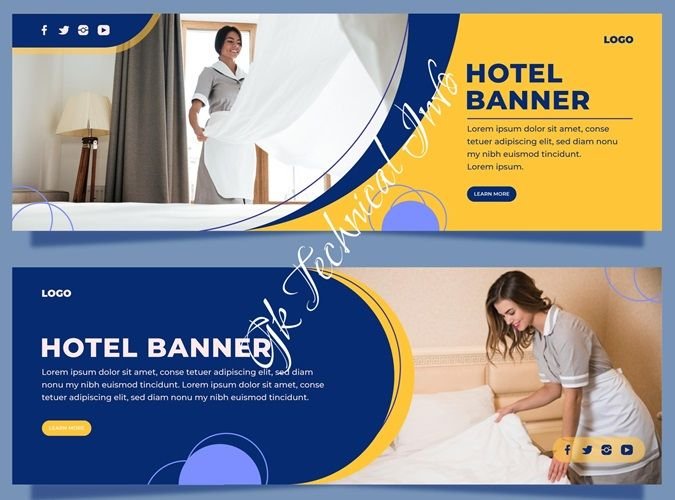
Banner designing involves creating visual elements that are typically displayed on websites, social media platforms, or physical locations to convey a message, promote a product or service, or attract attention to a specific event or offer. Banners come in various forms, including web banners, display ads, billboards, signage, and posters. Effective banner design requires attention to several key features.
Banners should convey a clear and concise message that communicates the intended information or call to action. The message should be easily understood at a glance.
Banners should feature visually appealing graphics, images, or illustrations that grab the viewer’s attention and entice them to engage with the content. Bright colors, high-quality images, and striking design elements can help make banners more eye-catching.

Banners should incorporate branding elements such as logos, colors, and fonts to ensure consistency with the brand identity. Consistent branding helps reinforce brand recognition and trust.
Text on banners should be easily readable, even from a distance or at a glance. Use clear and legible fonts, appropriate font sizes, and sufficient contrast between text and background to enhance readability.

Banners often include a call to action that prompts viewers to take a specific action, such as “Shop Now,” “Learn More,” or “Sign Up.” The CTA should be clear, compelling, and prominently displayed to encourage engagement.
For digital banners, it’s important to design with responsiveness in mind to ensure that the banner displays correctly across different devices and screen sizes. Responsive design helps maintain consistency and effectiveness across various platforms.

Incorporate whitespace or negative space around design elements to improve readability and visual appeal. Whitespace helps create balance and focus attention on key elements within the banner.
Avoid overcrowding banners with excessive text. Keep the message concise and to the point to prevent overwhelming viewers and ensure clarity

Use images or graphics that are relevant to the message or theme of the banner. Relevant imagery helps reinforce the message and create a stronger connection with the audience.
Adhere to any design guidelines or specifications provided by the platform or medium where the banner will be displayed. This ensures that the banner meets technical requirements and displays correctly.
By incorporating these features into banner design, designers can create visually compelling and effective banners that effectively communicate the intended message and engage the target audience.
I really appreciate the time and effort you put into your blog. Thanks for all you do
Just wanted to say a quick thank you for this amazing post. It was exactly what I needed
I appreciate the depth of knowledge you bring to this subject. Thanks for sharing
It’s refreshing to read content from someone who really knows what they’re talking about. Great post
You always manage to explain things in a way that makes sense to me. Thank you
I can’t thank you enough for writing this post. It was incredibly helpful!
this blog post highlights everything I love about it. Great review
I really enjoyed this post! It’s informative and well-written. Keep up the great work!